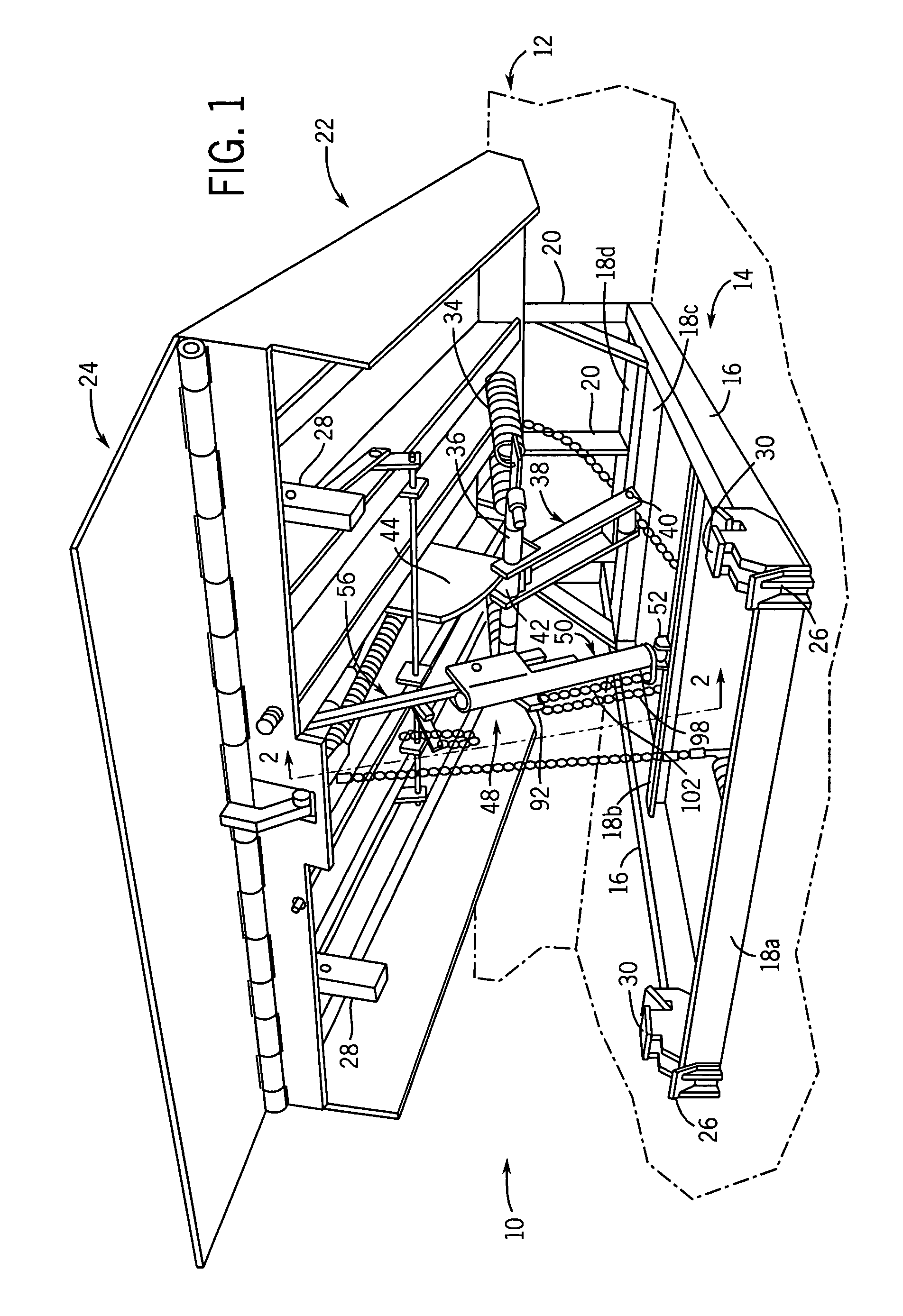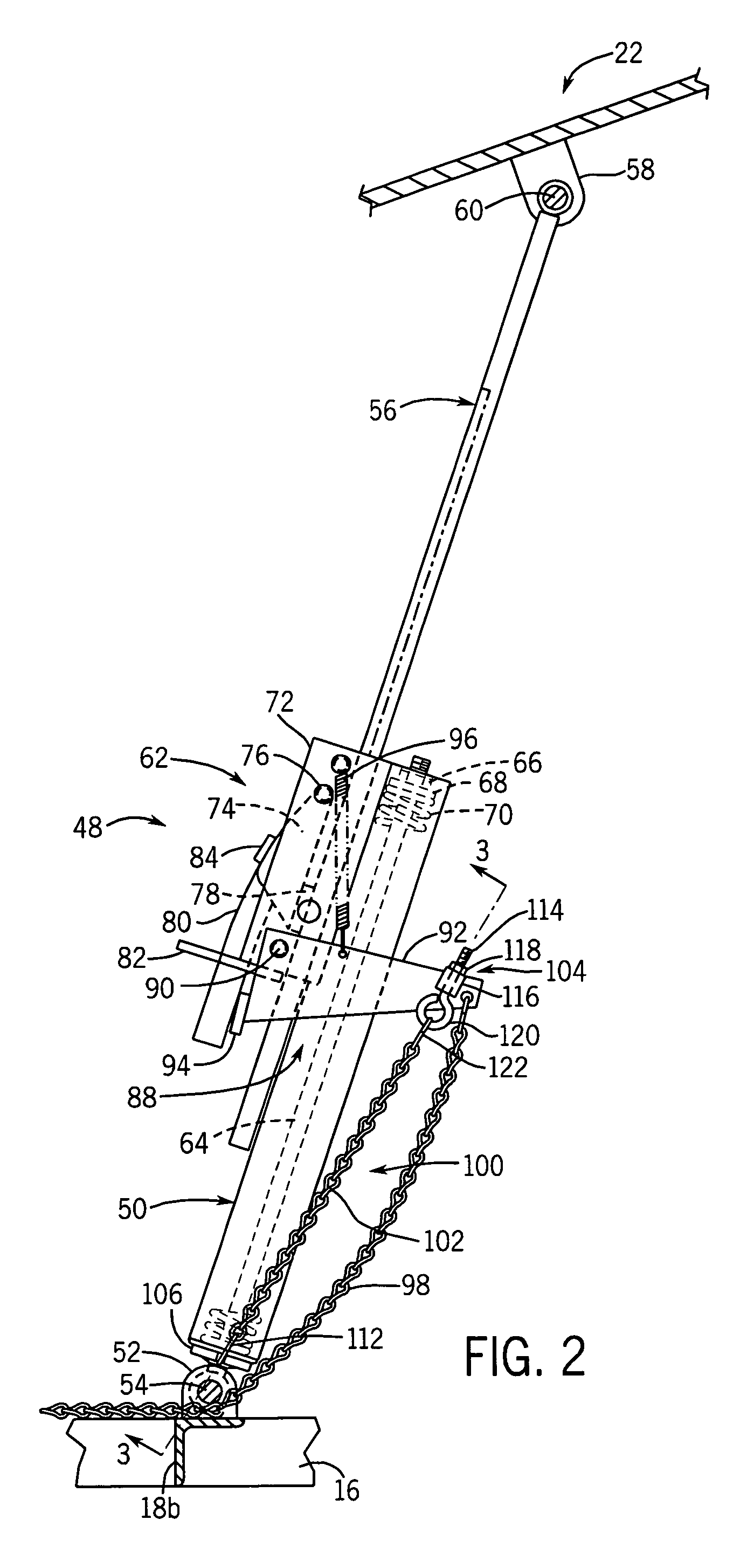Dock leveler assembly with adjustable automatic release
a leveler and automatic release technology, applied in the direction of bridges, loading/unloading, construction, etc., can solve the problems of affecting the operation of the leveler, the effect of disabling the automatic release function or premature automatic release, and the overall length
- Summary
- Abstract
- Description
- Claims
- Application Information
AI Technical Summary
Benefits of technology
Problems solved by technology
Method used
Image
Examples
Embodiment Construction
[0018]The adjustable automatic release feature of the present invention is adapted to be used with any type of dock leveler having a holddown mechanism that maintains the ramp of the dock leveler in a lowered position against an upward bias that tends to raise the ramp. The drawings and the following detailed description illustrate the adjustable automatic release feature employed in connection with a dock leveler having a certain illustrative construction, and it is understood that the adjustable automatic release feature may be used in connection with various types of dock leveler assemblies that vary from the specific construction as shown and described.
[0019]As shown in FIG. 1, a dock leveler assembly 10 is mounted to a loading dock 12, in a manner as is known. Dock leveler assembly 10 includes a frame or base 14 secured within a loading dock recess, e.g. to the front and back of the recess. Base 14 includes a pair of spaced side members 16 and a series of transverse members 18a...
PUM
 Login to View More
Login to View More Abstract
Description
Claims
Application Information
 Login to View More
Login to View More - R&D
- Intellectual Property
- Life Sciences
- Materials
- Tech Scout
- Unparalleled Data Quality
- Higher Quality Content
- 60% Fewer Hallucinations
Browse by: Latest US Patents, China's latest patents, Technical Efficacy Thesaurus, Application Domain, Technology Topic, Popular Technical Reports.
© 2025 PatSnap. All rights reserved.Legal|Privacy policy|Modern Slavery Act Transparency Statement|Sitemap|About US| Contact US: help@patsnap.com



